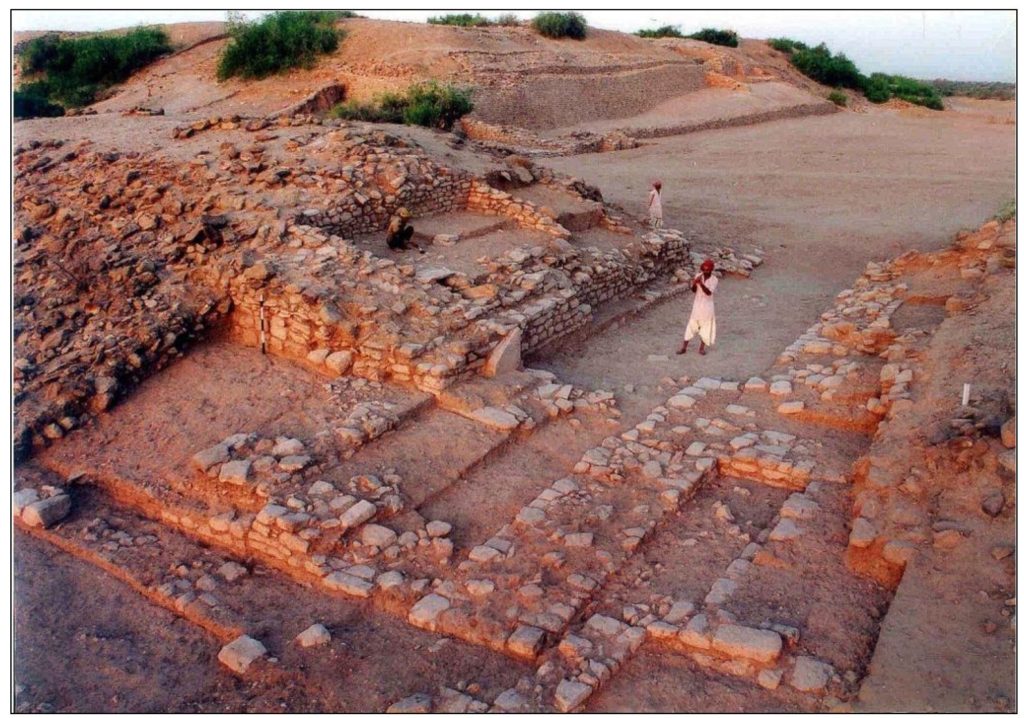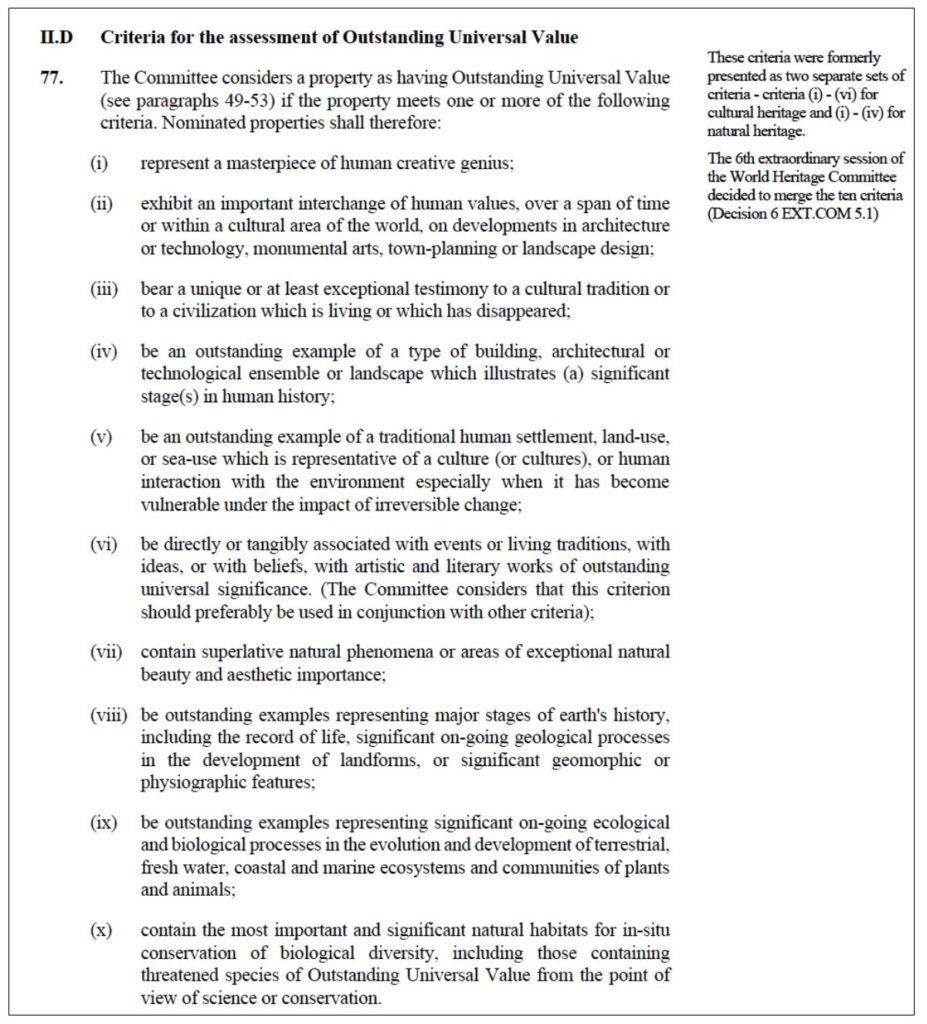Two more sites from India (Ramappa Temple from Telangana & Dholavira city from Gujarat) are inscribed on the ‘World Heritage List’ during the 44th session of the UNESCO’s world heritage committee. India now has 40 sites on the list and is sixth on the list of countries with the most sites.
Recently, UNESCO conferred the World Heritage inscription to Kakatiya Rudreshwara (Ramappa) Temple at Palampet, Telangana and the Harappan-era metropolis, Dholavira, Gujarat, in the extended 44th session of UNESCO’s World Heritage Committee being held virtually between 16 to 31 July 2021 in cooperation with the host country, China. The session was supposed to be held in 2020 but got postponed because of the pandemic. The nominations for 2019 and 2020 are being discussed in the ongoing session. With the latest additions, there are a total of 40 World Heritage Sites in UNESCO’s list from India which includes 32 cultural, 7 natural and one mixed property. While Ramappa temple was India’s nomination for 2019, Dholavira City was India’s nomination for 2020.


What is a World Heritage Site?
Those places on the Earth which have an outstanding universal value such as cultural or physical significance to humanity are designated as World Heritage and are prescribed on the World Heritage List prepared by UNESCO. Such places can be natural or man-made. Ancient ruins or historical structures, buildings, islands, mountains, gardens, monuments, deserts, wilderness areas, or anything which has some uniqueness, international importance, or historical value and deserves special protection are designated by the World Heritage Convention as World Heritage Sites.
A few famous World Heritage Sites are the Pyramids of Egypt, the Great Barrier Reef in Australia, Taj Mahal in India, Angkor Wat in Cambodia, and Venice and its lagoon in Italy. The accolade brings with it a set of responsibilities to maintain and safeguard the sites as they will be under international scrutiny.
When was the World Heritage Convention created?
World Heritage Convention was created in 1972 to identify and protect the world’s natural and cultural heritage considered to be of ‘Outstanding Universal Value’ in the lines that some places are so important that their protection is not only the responsibility of a single nation, but is also the duty of the international community as a whole; and not only for this generation, but for all those to come. The Convention is governed by the World Heritage Committee supported by the UNESCO World Heritage Centre, the secretariat for the Convention, and three technical advisory bodies to the Committee: IUCN, ICOMOS, ICCROM. The implementation of the World Heritage Convention is as per the Operational Guidelines which clearly stipulates the procedures for inscribing sites into the list, protection of sites, danger-listings, and providing international assistance under the World Heritage Fund.
What is the procedure for inscribing a site in the list?
There are 194 ‘State Parties’ or countries that have ratified the World Heritage Convention, as of 23 October 2020. India ratified the convention on 14 November 1977. Only these countries, that have signed the World Heritage Convention, pledging to protect their natural and cultural heritage, can submit nomination proposals for properties on their territory to be considered for inclusion in UNESCO’s World Heritage List. It takes years for a property to be inscribed on the list. Representatives from 21 State Parties meet once a year to decide which nominated sites will be inscribed on the World Heritage List.
The procedure for a property to be inscribed as a World Heritage Site is as follows:
- Preparation of tentative list- The country or ‘State Party’ must prepare a list of the important natural and cultural heritage sites that are located within the country’s boundaries, which can be submitted for inclusion as a World Heritage site. This inventory is called a ‘Tentative list’ and can be updated from time to time. Only properties listed in the tentative list will be considered for inscription by the World Heritage Committee. India’s tentative list consists of 46 sites. Temples of Kanchipuram and the iconic Riverfront of the Historic City of Varanasi are among the six sites included in the lists in 2021.
- Preparation of nomination file– With assistance from the World Heritage Centre, the State Party prepares a nomination file which must include the necessary documentation and maps. The file is then submitted to the World Heritage Centre for review, after which the document is sent to the advisory bodies for evaluation.
- Evaluation by advisory bodies– The International Council on Monuments and Sites (ICOMOS), and the International Union for Conservation of Nature (IUCN) must independently evaluate the cultural and natural sites which have been proposed and submit their evaluations to the World Heritage Committee.
- Decision of World Heritage Committee- The final decision to inscribe a site as a World Heritage site is taken by the World Heritage Committee after nomination and evaluation. The World Heritage Committee, which consists of representatives from 21 of the States Parties to the Convention elected by their General Assembly, meets once a year to decide the sites to be inscribed to the list. It can also ask State Parties to provide further information on a site.
Eligibility criteria- There are 10 selection criteria that are explained in the Operational Guidelines for the Implementation of the World Heritage Convention. The nominated site should satisfy at least one of the 10 criteria. Until 2004, the selection was based on six cultural and four natural criteria which have been revised into one set of ten criteria. The criteria are updated regularly to reflect the very concept of World Heritage. The latest Operational Guidelines was modified in 2019 during the previous session of the World Heritage Committee.

What are the benefits of being inscribed?
Having sites inscribed on the World Heritage List helps raise awareness among citizens and governments for heritage preservation. Furthermore, the country may also receive financial assistance and expert advice from the World Heritage Committee to support activities for the preservation of its sites.
How many properties are on the Heritage List?
As of 27 July 2021, there are a total of 1136 properties from 167 countries across the globe in the World Heritage List, according to UNESCO’s dashboard. The number might increase by the end of the ongoing 44th session. The list includes 880 cultural sites, 217 natural sites, and 39 mixed sites. According to regions on the UNESCO dashboard, the distribution of sites is given in the following chart. Most of the sites (more than 500), are in Europe and North America.
Which are the sites from India on the World Heritage List?
Italy (57) has the greatest number of World Heritage Sites followed by China (56) as per UNESCO’s dashboard as of 27 July 2021. India continues to be ranked sixth in the world in terms of the number of heritage sites. Spain, Germany, and France have more than 40 sites each. India had 40 sites inscribed, with the addition of Dholavira city, Gujarat. 10 of these were added after 2014, according to the Ministry of Culture. There are 15 countries with 20 or more sites inscribed from that country.
The list of World Heritage Sites in India and the year in which it was inscribed is given below.
What happens if the sites are not taken care of?
With inscription comes the responsibility to look after the property. If the countries do not adhere to UNESCO’s protocols, then the countries are sent a warning letter. If the country continues to be non-compliant, then UNESCO adds the property to the UNESCO’s ‘List of World Heritage in Danger’, also referred to as the ‘Danger List’, prior to getting delisted. Arabian Oryx Sanctuary (Oman), Dresden Elbe Valley (Germany), Maritime Mercantile City in Liverpool are the three sites that have been delisted so far.


